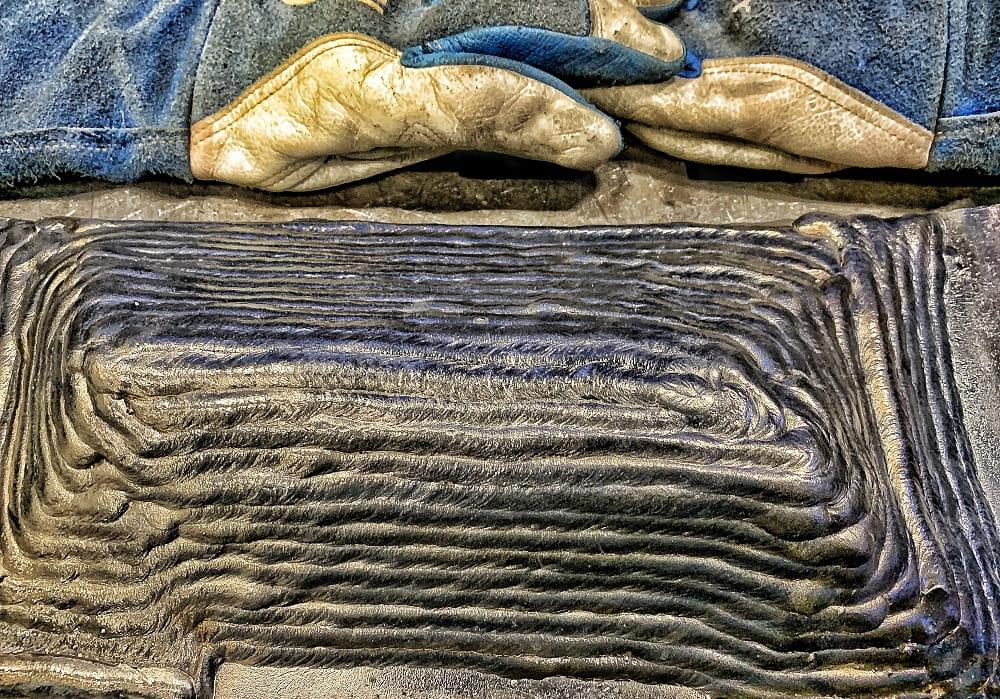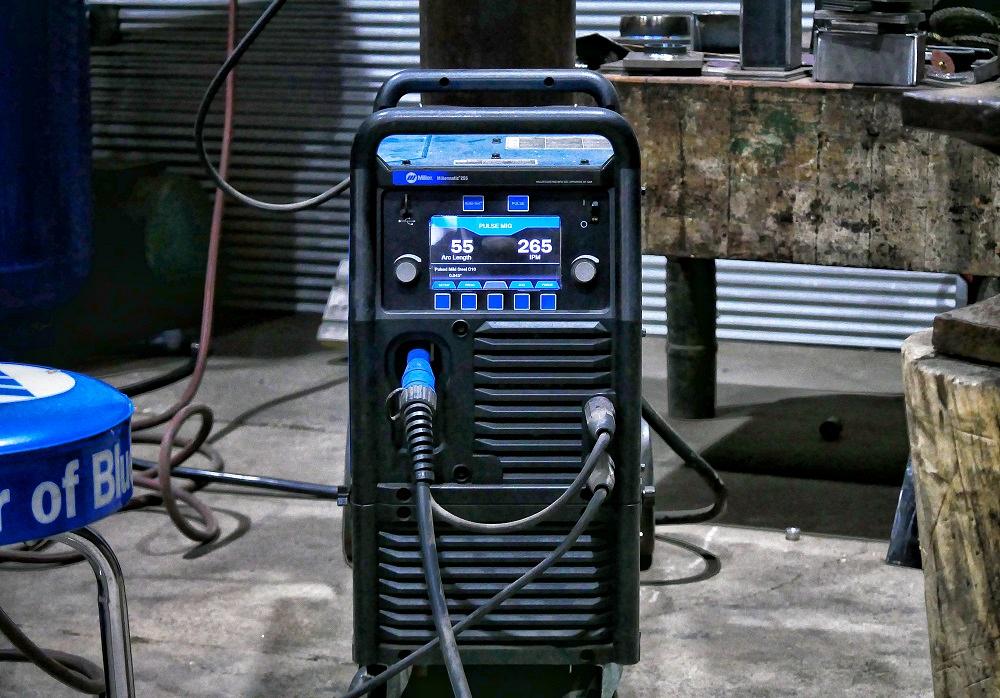Owner, Brown Dog Welding
- FMA
- The Fabricator
- FABTECH
- Canadian Metalworking
Categories
- Additive Manufacturing
- Aluminum Welding
- Arc Welding
- Assembly and Joining
- Automation and Robotics
- Bending and Forming
- Consumables
- Cutting and Weld Prep
- Electric Vehicles
- En Español
- Finishing
- Hydroforming
- Laser Cutting
- Laser Welding
- Machining
- Manufacturing Software
- Materials Handling
- Metals/Materials
- Oxyfuel Cutting
- Plasma Cutting
- Power Tools
- Punching and Other Holemaking
- Roll Forming
- Safety
- Sawing
- Shearing
- Shop Management
- Testing and Measuring
- Tube and Pipe Fabrication
- Tube and Pipe Production
- Waterjet Cutting
Industry Directory
Webcasts
Podcasts
FAB 40
Advertise
Subscribe
Account Login
Search
An honest conversation about pulse welding
Similar to arc welding, the process has become synonymous with pulsed MIG
- By Josh Welton
- May 24, 2020

Detroit-based welder and Brown Dog Welding owner Josh Welton offers a deep-dive assessment about pulse welding. Photos by Josh Welton
When you hear the term “pulse welding,” what comes to mind? Is it a process, a setting, or even a technique? The type of welder you are, or what processes you’ve been exposed to, could dictate your answer.
I remember when I was new to the trade and some terminology confused me. Maybe “confused” is wrong ... I was just kind of a pedantic jerk. “Arc” welding was the big one I was stubborn about. In my mind, all welding requires an arc, right? So, by definition, it’s all arc welding. I’d be kind of an a-hole about it when people used the word and I would ask them to clarify: What kind of “arc” welding do you mean? TIG? MIG? Obviously, they’re referring to stick welding; its invention superseded the other two by more than four decades, so it deserves the title.
Most old-timers would brush me off, or they’d just look at me with pity. “Dumb know-it-all apprentice,” which was probably accurate.
What “pulse” welding means is less cut and dried, I guess. Back in the infancy of social media, every time I’d post pics of a weaved weld or “stack of dimes” bead using TIG, I could count on someone asking about it in the comments. It was either usually one of these responses:
“Pulse?”
“Did you use pulse?”
“He pulsed that.”
It was like they were looking for a silver bullet, some secret setting that made every weld look fantastic. And I was never sure exactly what they meant, at least not without further clarification. Were they talking about the actual pulse setting on the machine? Or were they asking if I “pulsed” the pedal while welding?
The pulse function on a TIG machine has many uses, especially on inverter machines where you can go up to well over 100 pulses per second (PPS) while adjusting background and peak amps as well as the time spent at peak amps. It definitely helps on thin stainless; you put less heat into the workpiece and the pulsing action agitates the puddle, making any contaminants float to the surface. And operating with a high PPS is nice because it doesn’t actually change your bead appearance. That is, any “stack of dimes” is still laid down via operator technique, not a setting on the machine.
And that’s where my uncertainty came in. Nine times out of 10 they were asking to see if I used the machine’s pulse function to create “the look.” It’s possible if you go to a really low PPS and either lay wire or time your dip with the cycle, it’s just not something I do. I’m not even sure if it’s something that is done much in the industry. I think the number of times it’s asked about outweighs how much it’s actually done. The other one out of 10 times they were asking if I pulsed the pedal with my foot, which I sometimes do. I like to have complete control of how the bead looks via my foot, my feeding technique, and the movement of the torch.

Operating with a high PPS is nice because it doesn’t actually change your bead appearance. That is, any “stack of dimes” is still laid down via operator technique, not a setting on the machine.
When I think of pulse welding, though, I think about MIG. And not short arc, in which some people erroneously think pulsing refers to the (typically unwise) practice of “trigger” welding, which basically amounts to using the gun’s trigger to lay down a series of overlapping tacks. To be fair, it’s a very small percentage of welders who would think this way, but I figured it should be mentioned. No, what comes to my mind is gas metal arc welding-pulse (GMAW-P).
During the day when I’m building prototype military vehicles at General Dynamics Land Systems (GSLS), or parts for them, we use the GMAW-P process most of the time. To give some context, let’s start with spray transfer. It is a super-hot form of MIG in which the voltage is high, argon is usually over 90%, and the metal wire is atomized between the tip and the metal. Spray is nice because it can be used for really thick metal and it is super-clean; where it struggles is out of position. Gravity is not kind to the molten metal puddle and it’s difficult to control going vertical or overhead.
And that is where pulse comes in. Pulse welding was developed to use spray transfer in any position. Usually there isn’t much you can do to adjust the actual pulse. It’s built into the program for whatever purpose you’re using it for. At GDLS, we actually have proprietary programs for specific jobs, and they’re stored in our machines so we can choose the right program. While it is most commonly found in larger production shops and manufacturing facilities, the cost to get into pulse has been continually dropping, and machines capable of pulse are now readily available to the average Joe.
One of the big reasons I coveted Miller’s Millermatic 255 was that it can do pulsed MIG. Miller even tweaked the machine’s programming so that you can perform short arc and spray transfer with the same gas: 90/10 argon to CO2.
So while there is a pulse setting on most modern TIG machines, I consider it just that: an adjustable setting, like balance or frequency. Throwing the term “pulse” around with TIG still feels like a loaded proposition; there are so many things it could mean, I need clarification. GMAW-P, however, is the actual process itself, not a setting on the face of the machine that you tweak. Kind of like arc welding, pulse welding has become synonymous with pulsed MIG.
subscribe now

The Fabricator is North America's leading magazine for the metal forming and fabricating industry. The magazine delivers the news, technical articles, and case histories that enable fabricators to do their jobs more efficiently. The Fabricator has served the industry since 1970.
start your free subscriptionAbout the Author

- Stay connected from anywhere

Easily access valuable industry resources now with full access to the digital edition of The Fabricator.

Easily access valuable industry resources now with full access to the digital edition of The Welder.

Easily access valuable industry resources now with full access to the digital edition of The Tube and Pipe Journal.
- Podcasting
- Podcast:
- The Fabricator Podcast
- Published:
- 04/16/2024
- Running Time:
- 63:29
In this episode of The Fabricator Podcast, Caleb Chamberlain, co-founder and CEO of OSH Cut, discusses his company’s...
- Trending Articles
How to set a press brake backgauge manually

Capturing, recording equipment inspection data for FMEA

Tips for creating sheet metal tubes with perforations

Are two heads better than one in fiber laser cutting?

Hypertherm Associates implements Rapyuta Robotics AMRs in warehouse

- Industry Events
16th Annual Safety Conference
- April 30 - May 1, 2024
- Elgin,
Pipe and Tube Conference
- May 21 - 22, 2024
- Omaha, NE
World-Class Roll Forming Workshop
- June 5 - 6, 2024
- Louisville, KY
Advanced Laser Application Workshop
- June 25 - 27, 2024
- Novi, MI



























